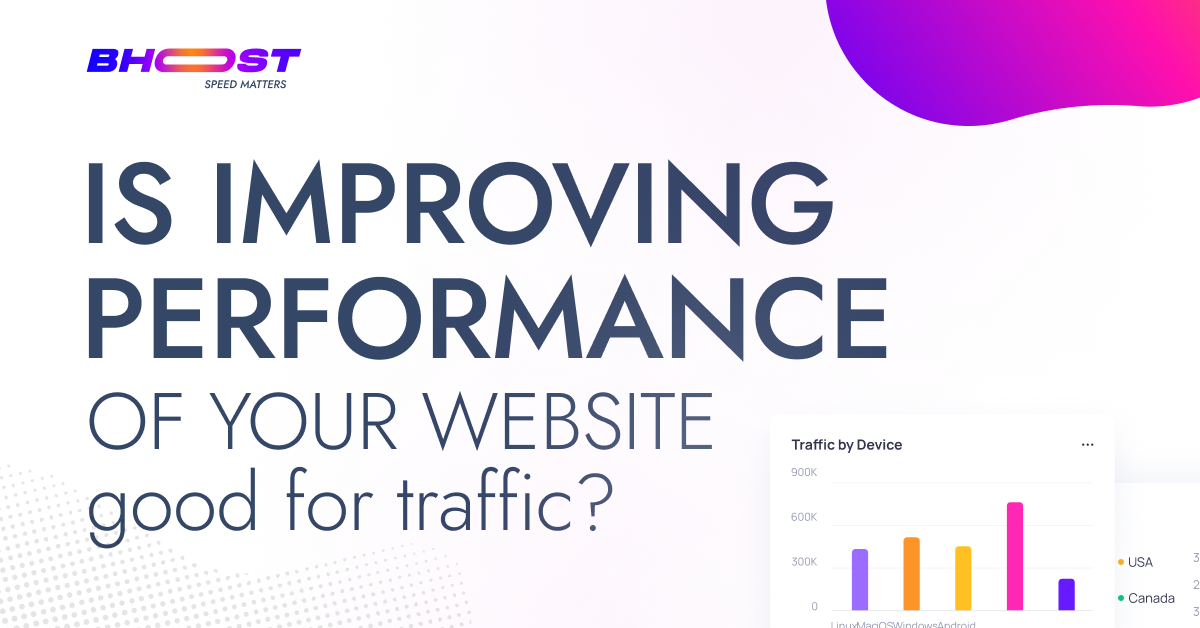As we anticipated, in May 2020, Google announced that “page experience” would soon become a ranking factor in Google Search.
This update therefore marked a significant turning point, indicating that a site’s performance is now a key determinant of a site’s visibility.
Google through Core Web Vitals determines how high a particular website should appear in search results.
There are several metrics that come into play. The LCP, the FID and the CLS. If these metrics are not met, Google will understand that the site is not performing and therefore will make it less visible.

By contrast, this means that instead Faster, better performing websites see more traffic compared to slower competition.
In the time since the announcement, Google has continued to release more information about exactly how performance can impact search rankings.
When it comes to organic search, a slow website will have fewer potential customers.
Not only that, in the month from 12 March 2024, the FID metric is replaced by a new metric, the INP Interaction to Next Paint. This metric measures the time between the moment the user presses a button or performs an action and the moment the action is actually performed.
In essence this metric is a direct measure of the responsiveness of the website.

So as you can see, it becomes really essential to have a fast and high-performance website.
Improving performance is good for conversions
Once a user accesses a website, performance greatly affects their behavior, influencing them in a positive or negative way.
According to a survey of more than 700 consumers, nearly 70% of users said that the performance of the website they were browsing affected their likelihood of purchasing or returning to the website.
In fact, how many times have we found ourselves on a site, perhaps to purchase a product. Well, if the site is slow it also gives us a feeling of inadequacy and above all of unreliability. And so in addition to leaving it because it can actually be frustrating to navigate, a user also abandons a site because they think it is unsafe. In essence it is a question of image, if the site works well, is fast and responsive, the user feels safer and more at ease.
The speed of a site, as you can see, is a really important factor for the user experience. In fact, this element comes before a good user experience or a good structure.
The performance improvement helps visitors save mobile bandwidth
According to data collected by the HTTP archive, page sizes have increased significantly in recent years. Over the past 10 years, the average size of web pages on the desktop web has tripled.

This can cause problems for all those users who are careful about bandwidth consumption. It is true that now many offers from mobile telephone operators offer a minimum of 50 – 100GB, but still why consume more? not to mention that there are areas where the mobile connection is not stable and therefore having a site that loads slowly has an even greater impact.
Increasing page size may lead consumers to upgrade to larger plans and spend more on mobile data.
Improved performance reduces hosting costs
A faster website can reduce costs. Images, videos and other media uploaded to the website must be stored somewhere, often with additional backups. In addition to storage, many cloud providers also charge for outbound bandwidth when users request a file from your servers.
In practice, the same type of image optimization that benefits things like Largest Contentful Paint and Cumulative Layout Shift can also reduce the amount of storage space required to house these assets.
A study by CrayonData found that not only optimizing images and uploading them via aCDN it reduced storage costs, but it also reduced network consumption. This resulted in an 85% reduction in hosting costs, saving over $200,000.
So as you can see, you can save a lot in this sense too.
So do I need to improve the speed of my site?
Well definitelyImproving the speed of the website can give you advantages in terms of conversions and economics. In fact, organic traffic, conversion rate and sales can all be linked to the speed or slowness of your website.
Making a website faster for users may require buy-in from stakeholders across all teams. It may require you to make difficult decisions about features, functionality and aesthetic elements that affect performance. Also from an organizational perspective, the additional design time and resources required may require management approval.
Despite these challenges, a fast website has the potential to be discovered and engaged by more users, especially if it is faster than its competitors. Once users find the website, they are also more likely to interact with it in more depth and ultimately convert into customers.
If you want to check the performance of your site to understand whether it is fast or not, test your site speed immediately.

Free 30-days trial Hosting corewebvitals Fast, Secure and Optimized
Switch to Bhoost with 30 days free and migration included
Free 30-days trial


